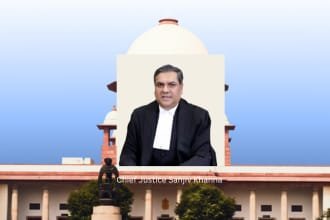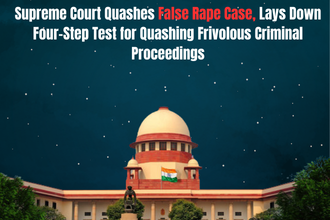In a development that has stirred debate within the legal and judicial fraternity, Justice Yashwant Varma of the Allahabad High Court has refused to step down from his post despite being indicted by an in-house committee constituted to investigate serious allegations against him. The committee, formed under the authority of the Supreme Court of India, reportedly found merit in accusations related to the discovery of unaccounted cash at his official residence during his previous posting at the Delhi High Court.
Who is Justice Yashwant Varma?
Justice Yashwant Varma is a senior judge who served at the Delhi High Court before being transferred to the Allahabad High Court. Known for his erudite judgments in constitutional and commercial matters, his reputation took a hit following the allegations of financial impropriety that came to light earlier this year.
The allegations stemmed from the reported recovery of large amounts of cash from his official residence, triggering concerns of judicial corruption and impropriety. Given the gravity of the situation, the matter was referred to the Supreme Court, which then directed the initiation of an internal inquiry under its “in-house procedure” to probe allegations of misconduct by High Court judges.
In-House Panel Findings: What We Know
Though the full findings of the in-house panel have not been made public, sources confirm that the committee found Justice Varma’s conduct unbecoming of a judge and recommended that he resign. Such recommendations, while not binding, carry significant weight as they emerge from a procedure overseen by the Chief Justice of India.
According to insiders, Chief Justice Sanjiv Khanna was kept in the loop throughout the proceedings. The panel reportedly comprised senior judges from different High Courts who meticulously examined the allegations, reviewed evidence, and recorded testimonies.
Despite the indictment, Justice Varma has firmly refused to resign, triggering a fresh controversy regarding judicial ethics and accountability.
Refusal to Resign: Legal and Ethical Implications
Justice Varma’s refusal to tender his resignation, even after being indicted by a judicial inquiry panel, raises critical questions about:
- The enforceability of the in-house mechanism
- The lack of binding consequences
- The limitations of judicial self-regulation
The in-house mechanism, while a vital tool for upholding judicial integrity, does not have statutory force. As a result, the judiciary often relies on moral persuasion rather than legal compulsion when a judge is found guilty of misconduct.
This loophole has come under increasing scrutiny, especially in cases where indicted judges continue in office without facing impeachment or prosecution.
Calls for Resignation and Judicial Clean-up
Following the report, there have been widespread calls from within the legal community urging Justice Varma to step down voluntarily to preserve the dignity of the judiciary. Former judges, senior advocates, and legal academics have emphasized that holding on to office in the face of serious allegations erodes public faith in the judiciary — an institution that depends heavily on its moral authority and perceived impartiality.
Bar councils and associations, including the Bar Council of India and the Supreme Court Bar Association, have called for transparency and swift action to address such lapses in the judicial system.
What Options Does the Judiciary Have?
The Indian Constitution provides for impeachment of judges under Articles 124(4) and 217. However, the process is cumbersome, requiring a two-thirds majority in both Houses of Parliament. Historically, this mechanism has been used sparingly, with no judge ever being successfully impeached despite multiple controversies.
In light of Justice Varma’s refusal to resign, the judiciary now faces a critical choice: either initiate an impeachment motion or pressurize through institutional dialogue. Both approaches, however, come with procedural and political challenges.
The Supreme Court may also consider recommending a compulsory leave or directing a freeze on judicial work allocation, though these steps are rare and may invite criticism for lack of constitutional backing.
A Test Case for Judicial Reforms
The Justice Yashwant Varma case may well become a landmark moment in the push for judicial reforms in India. It highlights the urgent need to:
- Strengthen internal accountability mechanisms
- Codify the in-house procedure
- Introduce statutory frameworks to handle misconduct
- Improve transparency in judicial appointments and transfers
Many legal experts argue that shielding judges under the guise of judicial independence must not extend to tolerating unethical conduct. True judicial independence includes the responsibility to hold judges accountable, especially when their actions threaten to tarnish the judiciary’s image.
Public Perception and Media Scrutiny
This controversy has also ignited public discourse on the perceived opacity of the judiciary. The general public often finds it difficult to understand how judges remain untouched despite allegations that would lead to suspension or arrest in any other profession.
The lack of accessible updates, redacted reports, and behind-closed-doors inquiries add to this opacity. Justice Varma’s continued tenure post-indictment has only fueled perceptions of elitism and lack of transparency within the judicial structure.
Conclusion
The refusal of Justice Yashwant Varma to resign despite the in-house panel’s indictment is not just about one judge — it is a reflection of the broader systemic inertia when it comes to judicial accountability in India. While the judiciary commands immense respect, that respect must be backed by transparency, integrity, and willingness to clean house when necessary.
This case is a litmus test for the Indian judiciary’s resolve to uphold its credibility. Whether through resignation, impeachment, or statutory reform, corrective action is imperative — not only to address the current controversy but also to prevent future crises of confidence.
As the legal fraternity and the nation watch closely, the hope remains that the judiciary will emerge stronger, more transparent, and more accountable.



